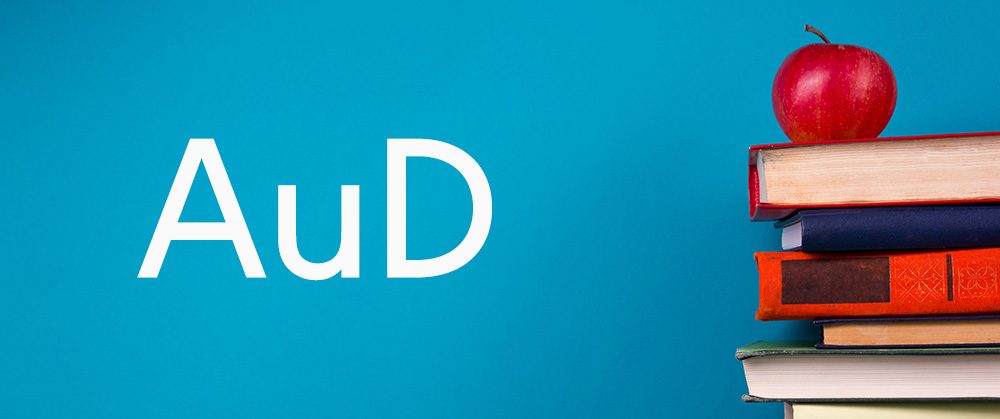For as many years as I have been involved in education of audiology students, the curriculum has been “evolving,” as we like to say at Iowa. Early on, we defined our scope of practice and developed tests and tools of the trade. As technology advanced, and the ethics of our audiology practices became more clearly defined, we needed additional coursework in instrumentation, signal processing, amplification fitting practices, and business management. As a profession, we evolved from basic hearing health care providers to clinicians who require proficiency in diagnostics and management across a wide range of etiologies. We struggled with what should be within our scope of practice in the hearing health care world, as well as who should determine the rules. As federal health care regulations continue to change, as our scope of practice continues to increase, and as each academic program works to balance “the ideal” with “fiscally responsible programming,” revisiting the current AuD model of education is pertinent, from both student and institution perspectives.
2016 AuD Education Summit
For the past 12 years, many of us have gathered at national meetings to address the educational needs of our newly established clinical doctorate in Audiology (AuD). The American Speech-Language-Hearing Association (ASHA) formed an ad hoc committee charged with planning a summit aimed at raising the bar in AuD education. The summit’s purpose was to address major challenges with the current model of AuD instruction identified by ASHA’s Academic Affairs Board in 2014 (for more information, see Academic Affairs Board Final Report on Critical Issues in AuD Education [PDF]). After a year-long process, ASHA hosted the 2016 AuD Education Summit to identify and advance future directions for AuD education.
As planned, representatives of all 75 academic programs in the United States attended the Summit, along with representatives from related professional organizations, accrediting bodies, and three student organizations.
The Summit focused on alternative educational models—in particular, consideration of transitioning the fourth-year externship to a residency model. The Summit also focused on five of the major challenges to AuD education, including
- lack of standardization of the externship process;
- quality control for externship sites;
- qualifications and skills of preceptors;
- ensuring student readiness for both the externship and at graduation; and
- student debt and return on investment.
Discussion of the Residency Model
Fred Bess provided a historical perspective, and I summarized the results of the surveys at the Summit. Representatives of medicine, physical therapy, and optometry then presented overviews of their residency programs to inform our discussions. We learned that, of the three, a residency is required only for medicine. Both physical therapy and optometry have voluntary residency programs, and these programs focus on expanded training in a specialty area. After intensive discussion and careful deliberation, the conference participants determined that the audiology profession was not prepared for a residency model and voted overwhelmingly not to pursue the model at this time.
Addressing the Primary Challenges
Ensuing discussions centered on the challenges and potential solutions associated with the current model of AuD education. Consensus polling of group members indicated that the three most important issues were (a) establishing a vision for the profession and its future; (b) standardizing the externship process and establishing a national database; and (3) ensuring student readiness. Small groups engaged in discussions and then reported out to the larger group with open mic opportunities. The most meaningful results from this process included the following:
- Skate to the Puck: We need to set a bold vison for audiology. As a collaborative group, the professional organizations should band together to affirm that we are positioned to meet the demands of diagnostic and treatment models 25 years from now. That vision must include the accrediting bodies
- Preceptor education is vital. As was discussed several times throughout the 2-day summit, our final preceptors are providing nearly one fourth of the clinical training for our students. In order to standardize the experiences for students, we need to make available more opportunities for professional development and training (both the American Academy of Audiology (AAA) and the Council of Academic Programs in Communication Sciences and Disorders (CAPCSD) use standardized experiences), and we need to consider developing a credentialing process and body.
- Standardization of externship experience. A number of participants lobbied for a centralized application/placement system as well as for setting up a national database and actual accreditation of the sites that serve as final externship sites.
- Ensuring adequate student training and readiness. This topic, along with measuring outcomes both prior to the externship and at the end of the externship, received a lot of support. Although each of the 75 programs have the option of “doing it their way,” we all agreed that some metric of readiness is desirable to go into the world of clinical audiology—beyond the Praxis exam.
- Student debt and return on investment. As we continue to concern ourselves with quality control issues, preparation and outcome measures, and projecting to the future of the changing health care landscape, many of us are concerned about the ultimate cost to the student. Some programs are reducing the length of the degree program from 4 years to 3 years; others are reducing the tuition for the externship year, whereas others are attempting to find more sources of funding for their AuD student population. Salaries for recent graduates are not increasing at the same rate as the increased debt our students are accruing, and this is a serious concern.










